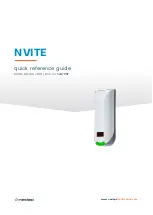
Designing interference-free controllers
Function Manual, 06/2014, A5E03461486-AB
25
Special measures for interference-free operation
6
Connecting inductances to quenching elements
Ideally, the inductances (for example, contactor or relay coils) controlled by SIMATIC do not
require any wiring to external quenching elements. The required quenching elements are
already integrated into the modules.
If the SIMATIC output circuit can also be switched off by built-in contacts (such as relay
contacts for EMERGENCY OFF), the module's integrated quenching elements are no longer
effective. In this case, the inductances must be wired to quenching elements.
Wire inductances to freewheeling diodes, varistors or RC elements, for example.
Table 6- 1
Wiring inductances
Wiring
DC-operated inductances
Wiring
AC-operated inductances
Programming devices
Provide a socket in each cabinet for the supply of the programming devices. The sockets are
supplied from the distribution board to which the protective conductor for the cabinet is also
connected.
Observe the following points during the installation of the socket in the control cabinet:
●
Include the grounding of the socket in your consideration of the equipotential bonding.
●
The common star point of the two ground potentials (cabinet and socket) must be close to
the two end points.
●
An equipotential bonding cable is not permitted as communication cable between
programming device and controller.
Summary of Contents for SIMATIC ET 200AL
Page 2: ......
Page 143: ......
Page 218: ......
Page 250: ......
Page 296: ......
Page 337: ......
Page 365: ......
Page 392: ......
Page 419: ......
Page 451: ......
Page 483: ......
Page 597: ......
Page 648: ......
Page 702: ......
Page 739: ......
Page 781: ......
Page 804: ......
Page 828: ......
Page 853: ......
Page 880: ......
Page 906: ......
Page 996: ...Diagnostics ...
Page 1121: ......
Page 1565: ......













































